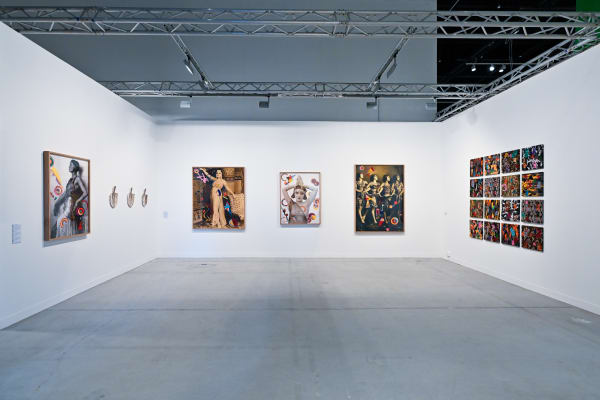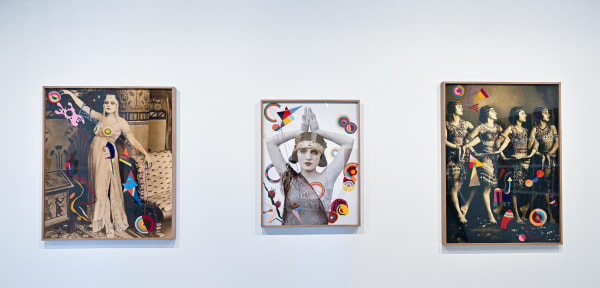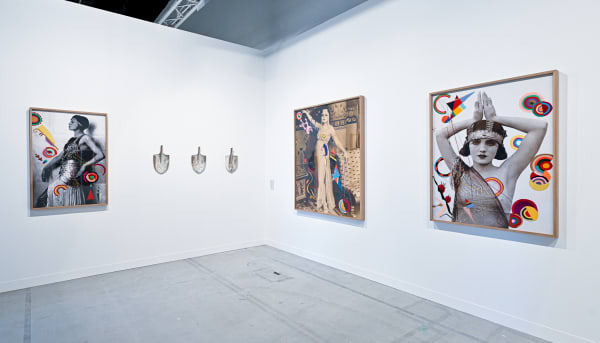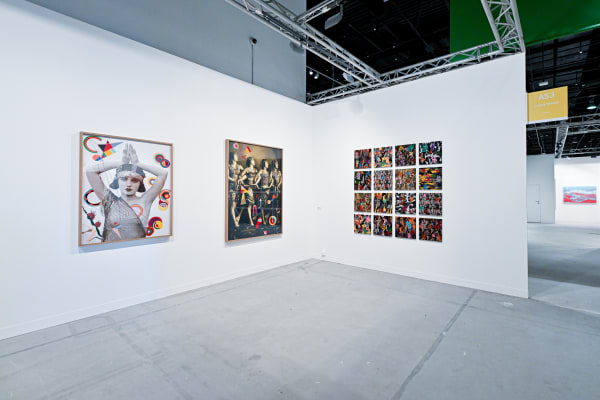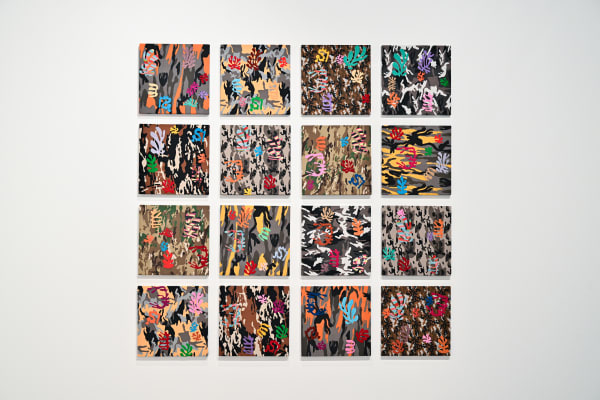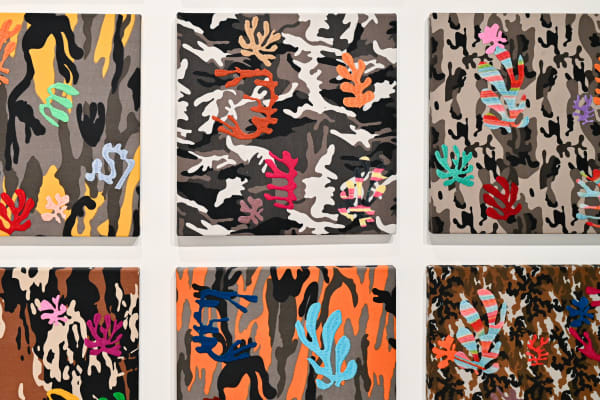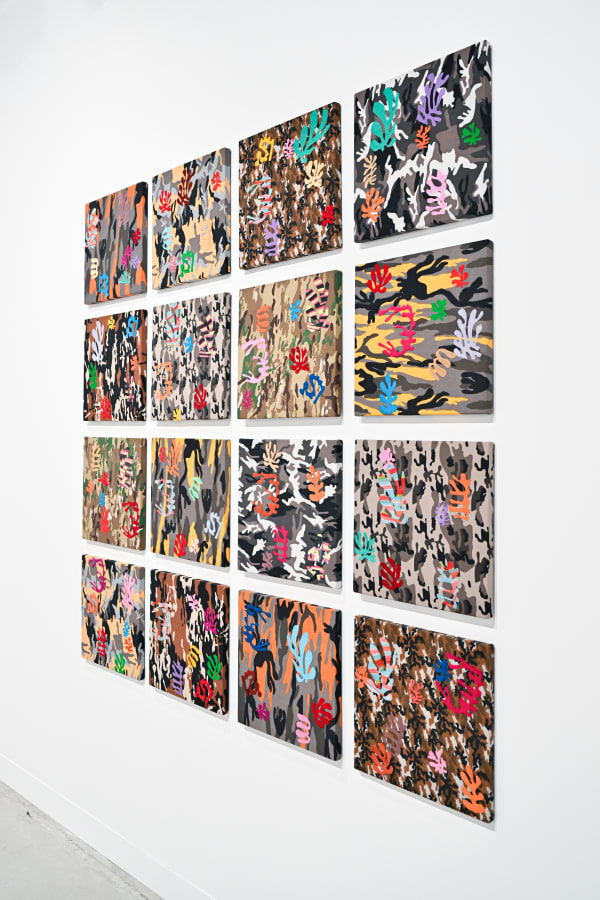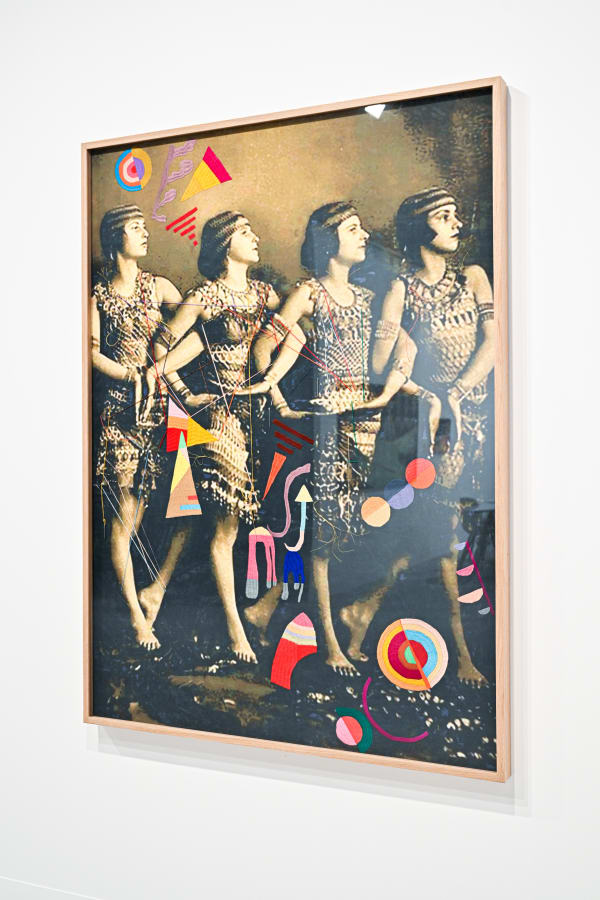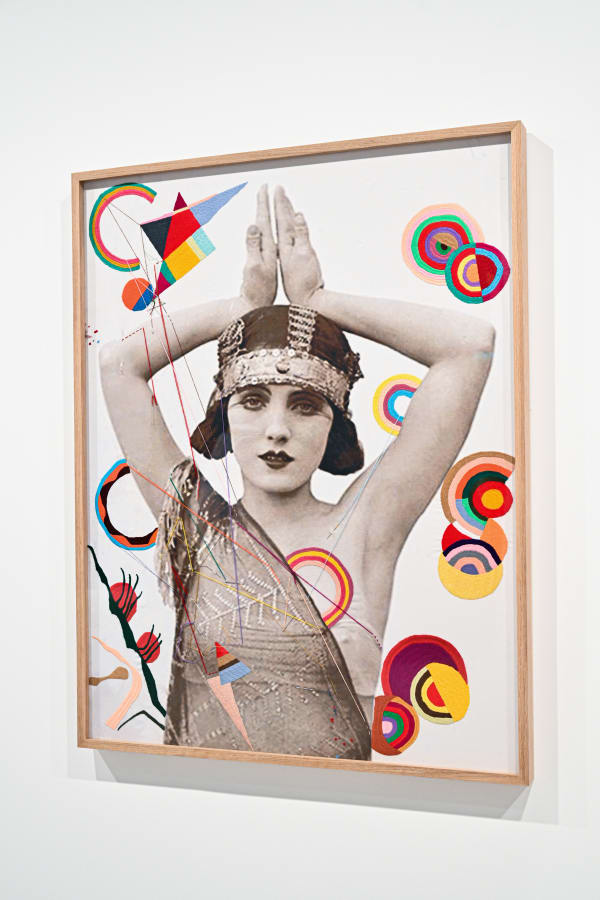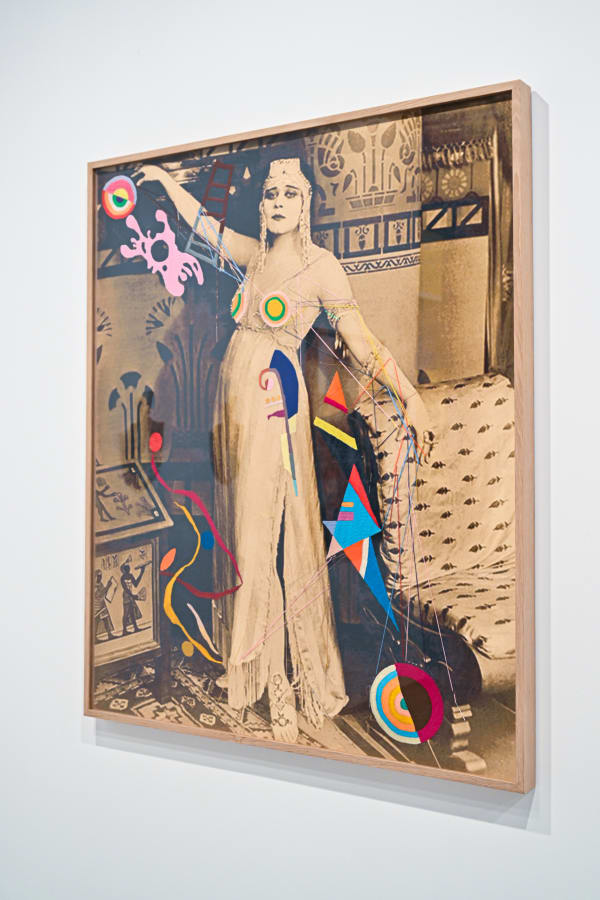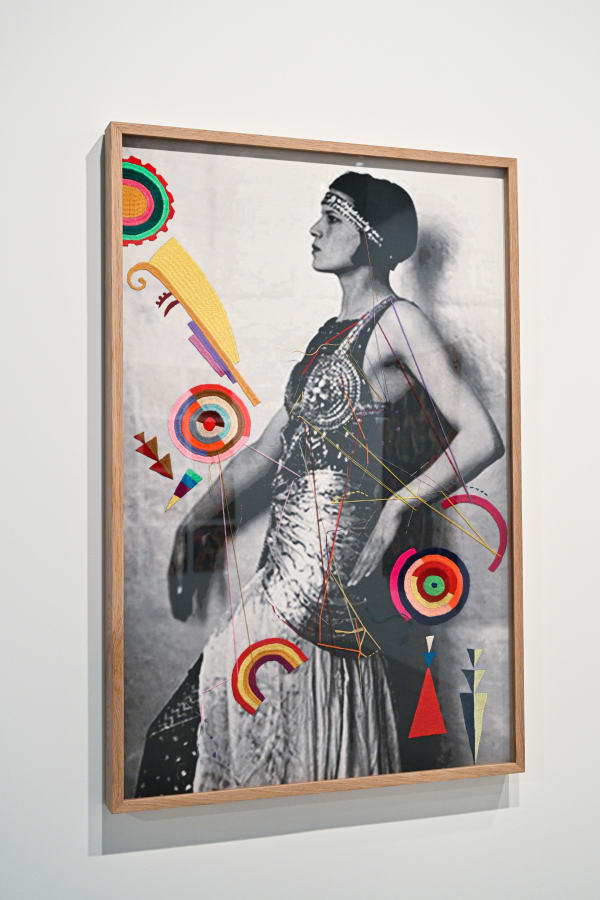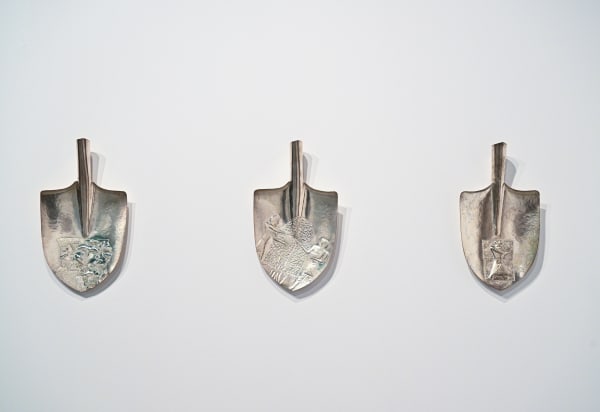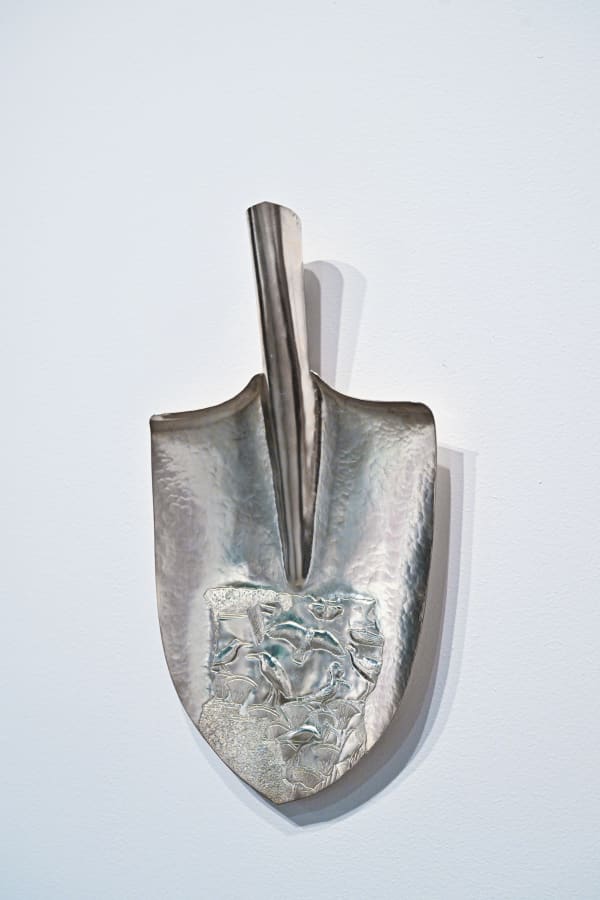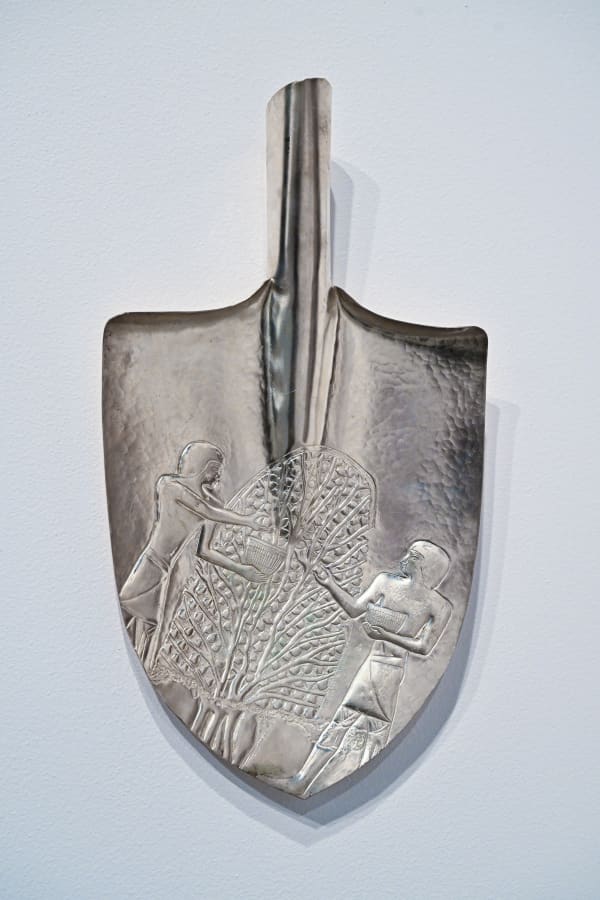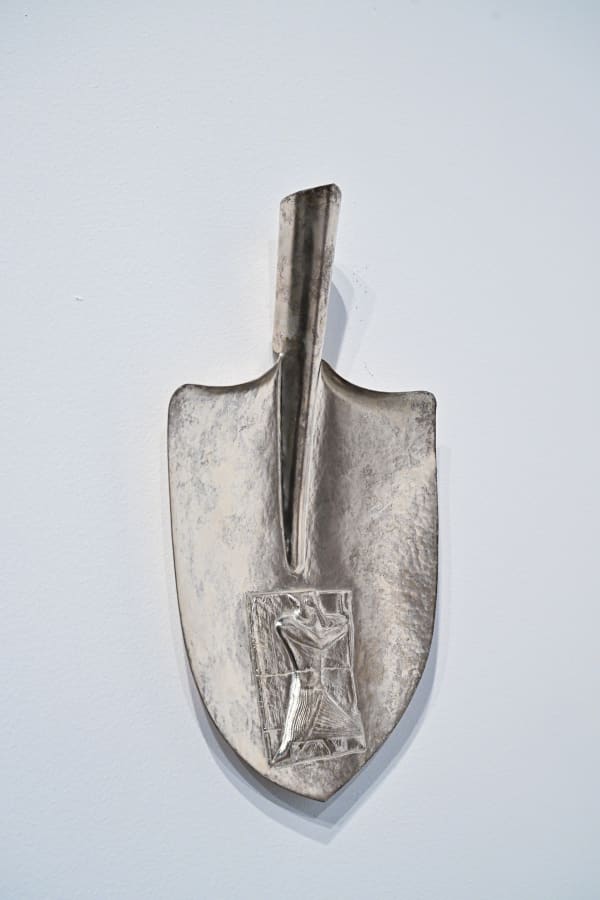Lawrie Shabibi is pleased to return to the 2022 edition of Abu Dhabi Art with a solo presentation of works by Farhad Ahrarnia (b. 1971, Shiraz, Iran). The presentation includes new works drawn from the artist's engagement with a diverse range of media– the internet, printed or found material, art videos and photography-based objects. With a focus on craft and the visual potentialities of archival images, this body of work is composed of embroideries and engraved wall sculptures, giving new insight into the artist's intriguing explorations of history and modernity.
In the series The Delirium of Becoming, a Moment Caught Between Myth and History, large embroidered works on aida cloth show us how we can use a chosen subject or person as a container or a metaphor for various tensions. By incorporating geometric forms and spontaneous colour into imagery the notion of movement is achieved, suggesting progress, as well as alternative ways of being, relating and expressing. Through these expressions Farhad Ahrarnia delves into the realm of the personal, verging on the autobiographical. By being aware of the conceptual potential of appropriation and touching upon complex themes, from modern dance to archeology, espionage to Egyptomania and fluid values of orientalism, Ahrarnia uses replication to give way to new visual potential. Instead of creating precise replicas, he deconstructs and rearranges well known images of people or archival media. By embellishing cross-stitched archival photographs from the 1920s onwards, he explores the policy-making of images and alternative modernities.
Farhad Ahrarnia’s Desert Flower/Desert Snow, After Matisse is a series of embroidered flower and leaf motifs on various camouflage textiles. By moving away from the representations of orientalism and exploring how cultures and events in history influence each other in very covert ways, he delves further into his exploration of the principles of Modernism and how they become articulated. Ahrarnia’s observations of the shapes depicted in camouflage patterns reminded him of those in Henri Matisse's cut-outs. Ahrarnia, however, appreciates the interaction between method and background: while Matisse "carved into color" with his cut-outs, in this instance Ahrarnia creates reliefs by embossing the patterned military fabric with brightly colored stitching. Similarly though, he aims to transform the language of conflict into the language of peace and playfulness.
The concern for the perishable and the discardable is a theme introduced in Ahrarnia’s smaller sculptural works. The silver coated copper shovels from his The Dig series are engraved and embossed with motifs which refer to legacy, complexity and richness of various objects and excavated relics particularly relating to Egyptian civilization. Ahrarnia is curious about the institutional handling of these excavated objects of heritage and the ramifications of the widespread, growing fascination about ancient Egyptian art forms in the recent decades. Although to us the shovel is a new object, there is the possibility of it being relinquished and rediscovered centuries in the future. Ahrarnia dwells on this cyclical notion of losing and finding and how that affects the writing of our history.
